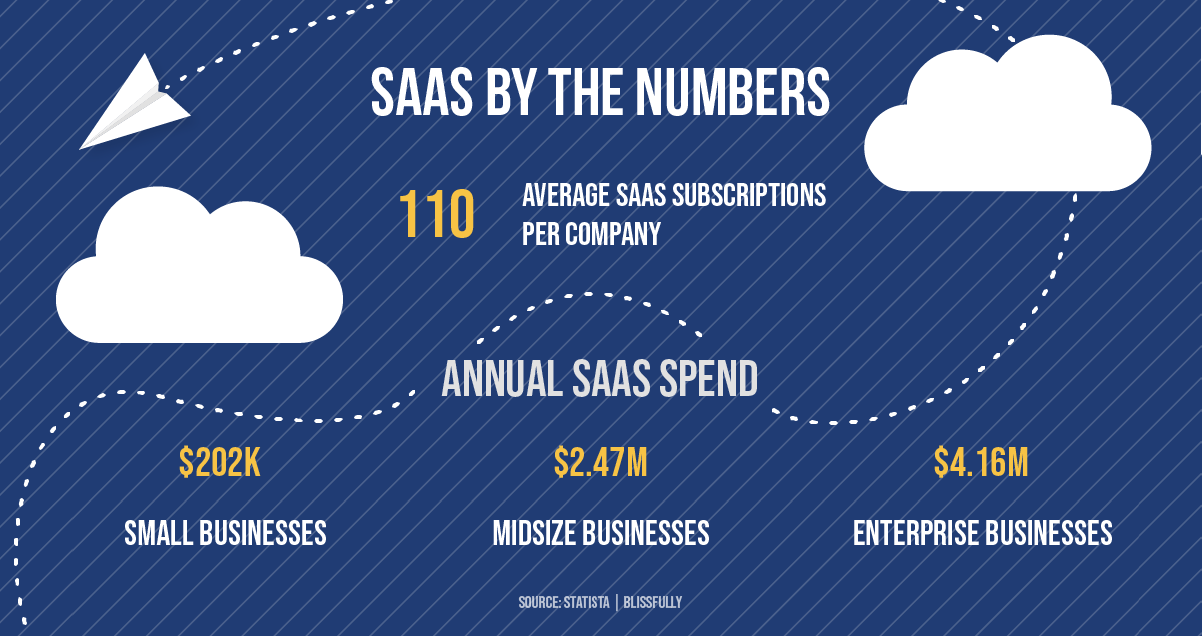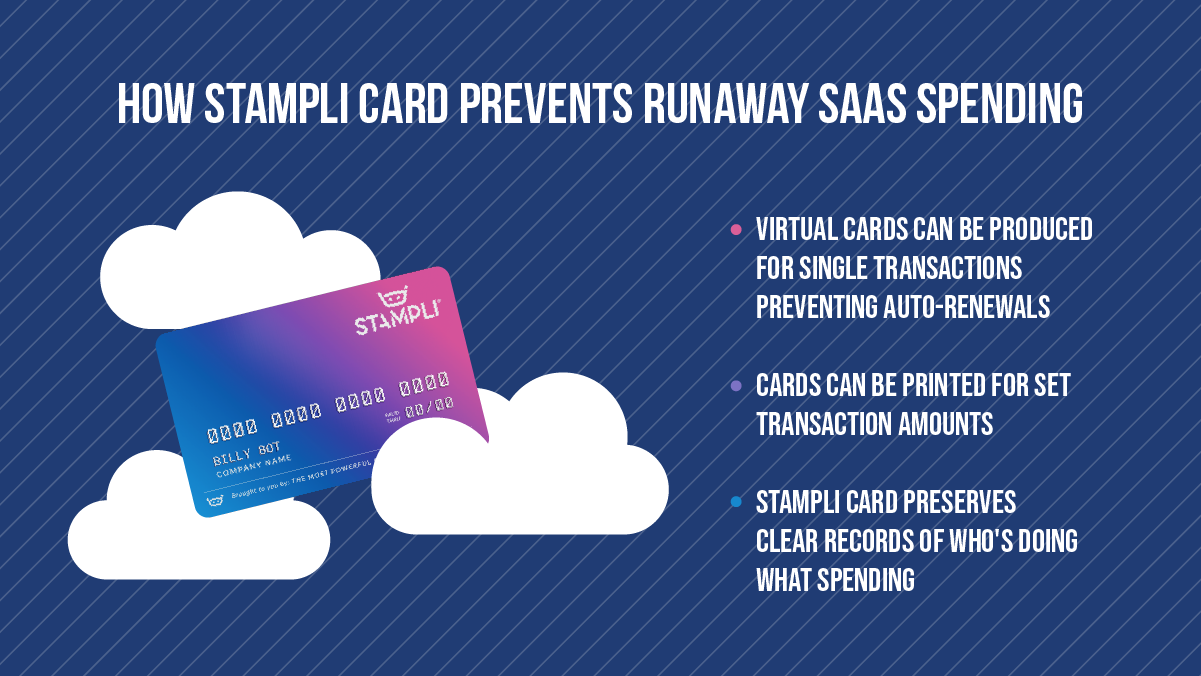How to Improve Your SaaS Vendor Management Process

Delivering software in the cloud has transformed business in recent decades, making it so that companies have a wealth of software-as-a-service, or SaaS tools just a download away.
But the SaaS movement has also created new headaches for companies, particularly in the realm of vendor management. It can be easy for businesses to lose track of just how many SaaS applications they have, what’s working best, and how and when they’re spending money on these services.
Today, we’re going to explore a way to rein in the spending: SaaS vendor management. In particular, we’ll look at why this effort should include the use of virtual payment cards.
Basics of SaaS and SaaS Vendor Management
First, let’s take a look at what exactly defines SaaS – a term that gets thrown around often in business – and why SaaS vendor management matters.
Defining SaaS
Once, if a business wanted software for its company, personnel would have to purchase a physical copy, using a CD-rom or (and this really takes us back) floppy disk to install it. It might take hours, even days to install a major piece of software like an operating system on a primitive computer. Before long, as the OS became out of date, the staff would have to proactively repeat the procurement process, which might include a request for RFPs.
Happily, it’s safe to say these days are long gone.
The idea of delivering software via the internet has grown in popularity since the mid to late 90s, with Oracle, for instance, noting its CEO Larry Ellison devised a delivery method in 1995. With SaaS, employees never have to troop to box stores for software or keep an eye on when new software versions will drop.
Instead, SaaS providers and their IT teams use the magic of cloud computing to install the software for stakeholders, handling updates for new software and repairs on their end. There are functionality, accessibility, and cost-saving benefits associated with SaaS use. SaaS is wherever companies need it to be, scaling with their needs. Vendor performance standards and metrics can also be set forth in SLAs, or service level agreements.
Not surprisingly, SaaS – the most common of three major branches of application service providers, along with IaaS (infrastructure-as-a-service) and PaaS (platform-as-a-service) – is fairly ubiquitous for businesses these days. SaaS can cover everything from CRM (customer relationship management) tools like Salesforce to major ERP (enterprise resource planning) systems and much more in a company’s potential SaaS stack.

The average business likely has loads of SaaS apps, whether it knows it or not, with the average company having 110 SaaS subscriptions as of 2021. From a spend perspective, in recent years small businesses were paying $202,000 annually for SaaS subscriptions, with mid-size companies paying $2.47 million and enterprise-level firms paying $4.16 million. And therein lies the issue. As one technology executive told PYMNTS.com in early 2022, “SaaS overloads the business because of the sheer quantity of products in use.”
Left unchecked, SaaS apps can quickly become a drain on company resources. That’s where SaaS vendor management comes in.
Defining SaaS Vendor Management
SaaS vendor management is an attempt to control the chaos of so many different apps, actively taking stock of the different SaaS vendors and suppliers that a business might work with and then determining who makes sense to keep working with.
The first step in SaaS vendor management can be to determine how many SaaS subscriptions a company might have. This can be tricky, with purchasing often decentralized. In a 2021 survey report by Stampli and Treasury Webinars, “AP Today: Bottlenecks, Benchmarks & Best Practices” 38% of respondents said their companies left purchasing to departments, while 25% said it was handled by procurement teams. Another 34% used a hybrid approach between both of these groups for purchasing. Still, once data is gathered, a SaaS vendor landscape should start to emerge that accounts payable (AP) can analyze.
Businesses can and should have an idea of the full suite of their software applications. From there, more sophisticated strategies can start to be deployed.
SaaS Vendor Management Best Practices
As a company moves from passive to active management of its SaaS vendors and associated spending, it’s smart to have a coterie of strategies. Here are five to consider:
1. Go Beyond Spreadsheets to Monitor SaaS Vendors
At first when a business is trying to hone in on its SaaS spending, it might simply have key personnel try to ascertain which vendors are being leveraged, even just having the personnel keep this knowledge in their heads. This is, of course, a risky strategy, with employees liable to take the institutional knowledge of a company’s SaaS efforts with them when they depart, leaving nothing.
A smarter course of action is to have SaaS vendors and spending monitored in some kind of written record. Some companies will opt to compile spreadsheets, but this isn’t that much better than creating no record at all. This is because a spreadsheet is a static asset which typically must be manually updated as new information becomes available about the SaaS tools and providers that a company is using.
Ideally, companies will want some kind of vendor management solution for monitoring their SaaS vendors. One option is AP automation software, with another 2021 survey report by Stampli and Treasury Webinars, “The How, the Why & the ROI of AP Automation” noting that 41% of respondents said their companies were using this software for supplier management. SaaS management platforms also exist, and AP automation software can help serve as a vendor management system, too.
2. Regularly Audit SaaS Subscriptions
Sometimes, the most a company might ever look at a potential SaaS provider is during the procurement or vendor onboarding process. It’s wise to go beyond this. One way: Audits, whether done by internal personnel, external CPAs, or the United States Internal Revenue Service, which offer a granular look at a company’s operational capacities, expenses, and more.
Businesses can do both annual and periodic audits of their SaaS subscriptions, weeding out old ones that are no longer in use but still on the books, being realistic about potential vendor risk, and determining where redundancies might exist. With so many different SaaS subscriptions for the average business, a company may have overlap and unnecessary spending. It’s incumbent on businesses to determine the leanest lineup of SaaS tools for their companies to use.
Businesses can also look at other facets of their SaaS programs, such as which ones offer the cleanest workflows and least amount of work for their IT departments (be mindful of shadow IT as well.)
3. Be Mindful of SaaS Ownership and Licenses
Businesses can also leave themselves liable if they don’t have a clear idea of which departments or personnel actually own the SaaS subscriptions, which is a more common problem than people might think. G2 noted that an estimated 10-15% of a company’s technology stack lacks a clear owner.

If there is poor clarity of ownership over the number of licenses a company is allowed for a SaaS subscription, a business may run afoul of its user terms, lose access to the service, or face potential legal liability. Nebulous information around SaaS ownership can lead to damaged vendor relationships, missed certifications, and susceptibility to phishing scams.
4. Keep Track of SaaS Subscription Renewals
One way that a company can get itself into trouble with its SaaS subscriptions is that left unmonitored, these plans can keep auto-renewing as long as the vendor has active payment information for a company.
While auto renewals are starting to be cracked down on, with states like New York, Colorado, California, and Hawaii having far-reaching consumer protections that make it harder for vendors to keep charging without affirmation from a business, this certainly isn’t everywhere in the United States and beyond.
Thus, companies need to keep track of upcoming renewals for their different SaaS subscriptions, whether by SaaS management platforms, AP automation tools, or other means. On that last count, here’s another great way to monitor renewal dates: Virtual payment cards.
5. Use Virtual Payment Cards for SaaS Subscriptions
Virtual payment or ghost cards are on the rise, with another 2021 survey report by Stampli and Treasury Webinars, “How & Why Companies Choose Payment Types” finding that 61% of companies were using this payment method.
These types of cards, such as Stampli Card, can be a superb part of the SaaS vendor management process. In the next section, we’ll explore a bit about why this is.
How Stampli Card Helps with SaaS Vendor Management
It isn’t enough to just keep a spreadsheet of SaaS vendors or perform the occasional audit. For companies to optimize their SaaS vendor management strategies, solutions such as Stampli Card can work wonders.

Reasons for this include:
Individualized Transactions
Unlike traditional corporate credit cards, where the same numbers are used for countless transactions over the life of the card, virtual payment cards like Stampli Card allow one-off, individualized transactions that are customizable ahead of time.
What this means is that ahead of a transaction, such as a hotel room or entertainment expense, a Stampli Card can be printed off with unique numbers. The type of transaction can also be delineated, so that the transaction data is captured for review. If a company wants to segment out all of its AP-related SaaS spending, Stampli Card can provide the data.
Stopping Phantom Saas Renewals at the Source
Phantom renewals of SaaS subscriptions are charges that keep happening because a company forgets to cancel the service. It’s easy to forget about a renewal, with all of the SaaS subscriptions many companies have. The good news: The individualized transactions offered by virtual payment cards can head off auto-renewals by SaaS vendors.
Since the numbers on Stampli Card can be designated to only work for a single transaction, there’s no way for a vendor to keep charging the same card, should a company forget to cancel an unwanted service. The SaaS subscription will be cut off if a company doesn’t want to renew it. Remittance won’t be able to occur for even the most clandestine of new vendors.
Clean and Easily Accessible Records
As we noted, virtual payment cards like Stampli Card make it so that transactions can be easily captured. The records are also preserved in the cloud long-term, making it so that whenever a company needs to revisit its SaaS strategy, it can easily do so. They can also have access to real-time data.
The best SaaS vendor management approach is not to make it a one-off approach. It’s to use tools such as Stampli Card to regularly refine and perfect it.
Don’t SaaS without this pass. Check out Stampli Card today.